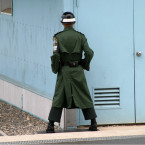Excerpts from “Domestic Fire: A Study of Hearths and Fireplaces”
Claude Lévi-Strauss suggests that once controlled, fire becomes a civilizing process—an ability which allowed our ancestors to cook their food and become “truly human.”25 No matter the differences in the aforementioned cultures, their myths (and many others not accounted here) are all preceded by the fact that humans were practically savages, forced to live life in similar manner befitting such a lowly status: naked, grazing on grass, eating raw meat, heating their food in the sun or their armpits26 and spending their cold nights in darkness and fear. Thus, signs of civilization eluded all of humanity before the discovery of fire, and its acquisition stands as a milestone in human development. It could also be said that the ability to handle fire is an exclusively human talent; and rising out of the mercurial temperament of fire and its fortuitous origin are the seeds of civilization. Our existence as civilized beings in this world is predicated upon our ability to control fire and these myths allude to this idea.
Initially posed as a source of fear and the “unknown,” brought to the human consciousness as a precipitous encounter of natural phenomenon, fire dispels men. Soon enough, the potential use of fire is understood and its presence is accepted and incorporated into society. The final statement of the paragraph illustrates that fire even evoked a desire in these primitive men to communicate with each other about the possibility of the fire’s uses—fire, led to the “coming together men, to the deliberate assembly, and to social intercourse.” Posited under such circumstances, domestication of fire takes place in the primitive society.
* * *
The domestication of fire resulted in the empowerment of mankind; and from this empowerment and the security which befell mankind as a side-effect of the domestication of fire would allow for the development of culture that saw the hearth as its foci.
The idea of gathering and socializing around fire and food reverberates throughout history in a variety of ways. Many of the primitive hearths were rough constructions, generally located in the center of the dwelling to supply sufficient draft of air from all sides. These hearths were relatively small in size, usually proportional to the amount of fuel available in the area, encircled with stones that would help re-radiate heat back to the fire, while the spaces between these stones helped to funnel air to feed the flames.34 Eventually, the hearths moved from outdoors or caves to structural enclosures like simple turf huts, where they were placed near the relative center of the rectangular structure. Centered on the hearth, spaces like timber homesteads, stables, and storage rooms were housed at one end of the building, while the people were accommodated on the other. No chimneys were provided in the early versions of the house and the smoke had to be slowly ventilated through rather architecturally uneventful holes in the roof.35 Many Saxon Halls used this rudimentary design, and these “firehouses” were made as the communal apartment for the lord’s family and was the only house where an indoor fire was made.

















